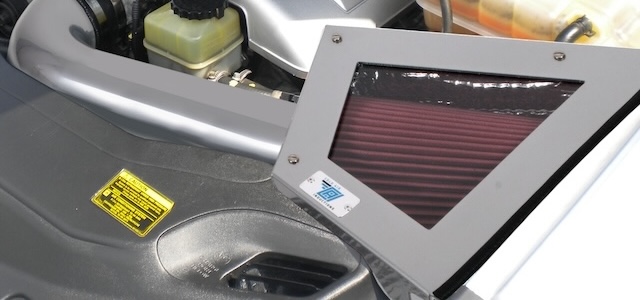What Does It Mean To Be A Tier 1 OEM Supplier?
When it comes to aftermarket cold air intakes, performance enthusiasts are spoiled for choice. However, not all cold air intakes are created equal. Some air intakes are made by companies that supply parts to OEMs (like we do).
Our journey from an aftermarket innovator to a tier 1 OEM supplier is a testament to our commitment to quality and innovation. In this blog post, we’ll explore what it means to be a tier 1 OEM supplier, why we don’t make our cold air intake kits out of plastic, and how these things make our products different.
What It Means To Be A Tier 1 OEM Supplier
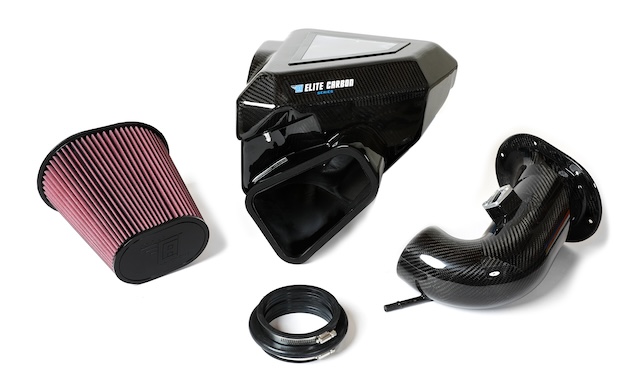
First, let’s clarify what a Tier 1 OEM supplier is:
- If you make parts or assemblies that are used to build or modify a new vehicle, than you’re an OEM supplier
- If you make parts or assembles that are used to build or modify a new vehicle – and you sell them directly to the automaker – than you’re a Tier 1 OEM supplier
Being an OEM supplier is great, as it means you make a quality product. But being a Tier 1 supplier is better: Not only are you making a high quality product, you’re also certifying that every one of your products will meet the automaker’s very high standards.
A typical OEM supplier will send parts to someone else, and then that party will do the testing and the quality control. Typical OEM suppliers have a little bit of latitude to make mistakes. Tier 1 suppliers (like our company) have no latitude. The buck stops with us.
It’s hard to become a Tier 1 supplier, and even harder to maintain that status. Most companies don’t bother, and we think that says something about their commitment to quality.
Here’s Why The Quality Of Every Intake Really Matters
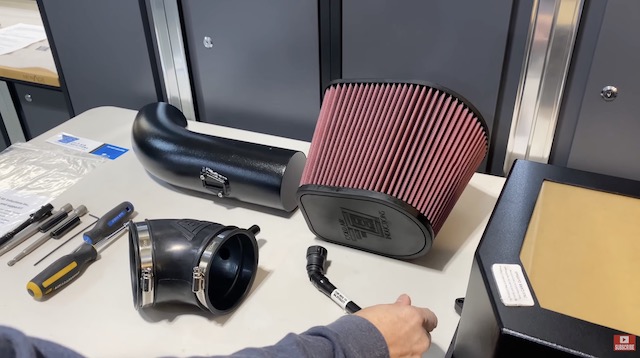
A lot of people think about air intake kits the same way they think about plumbing: A bigger air intake tube can flow more air, so a bigger intake is better.
However, the size of the air intake tube is basically determined by engine displacement: At wide open throttle (WOT), your engine can only use a specific volume of air. Bigger engines need bigger intake tubes, and smaller engines need smaller intake tubes. Any inconsistency in the size of the tubing is bad:
- Too much air flow from an oversize tube means the engine runs lean, reducing power and risking engine damage
- Too little air flow from an undersize tube means the engine runs rich, wasting fuel and losing power
In other words, what you really really want from your air intake tube is precision. The air intake tube needs to flow a very specific volume of air. That means the tube needs to have a uniform thickness and cross-sectional area from one end to the other. Any variations or inconsistencies will change air flow and impact performance.
And Here’s Why We Don’t Make Our Intakes From Plastic
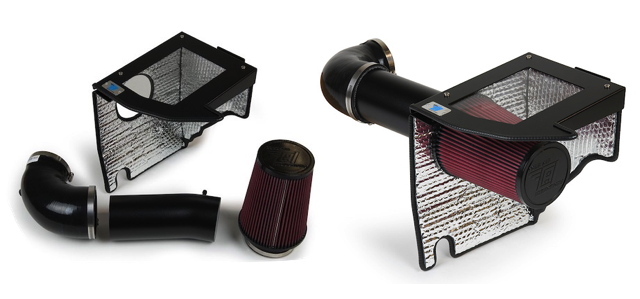
So we told you all of that business about being a tier 1 supplier and air intake tubing to tell you this: It’s very very difficult to make a quality air intake tube out of plastic without spending a lot of money.
1. Factory Air Intakes Are Almost Always Injection Molded Plastic
Most OEM air intakes are injection molded plastic for a couple of reasons:
- Injection molding is fairly precise – definitely good enough for an air intake
- Injection molding is very consistent from piece to piece, which is also really important (as explained above)
The trouble is that injection molds are extremely costly – $1 million+ per mold. If you’re an automaker manufacturing hundreds of thousands of parts with the same mold, the cost per piece is pretty good. But if you’re a small aftermarket air intake manufacturer? You can’t afford to spend millions on molds.
2. Most Aftermarket Air Intakes Are Roto-molded Plastic
Rotational molded plastic (aka roto-molded plastic) is what most companies use for their air intake tubing because roto-molding is a very affordable. A roto-mold costs 1/20th as much as an injection mold. This means that, instead of spending $1 million on an injection mold like an automaker would, after-market air intake manufacturers spend $50,000+ on a roto-mold.
The trouble is, roto-molding is very inconsistent. Roto-molding works by pouring hot plastic into a mold and then spinning the mold as the plastic cools. In theory, the plastic will cool uniformly and piece will be good enough. In reality:
- Roto-molded plastic will have different thicknesses in different spots, as it’s hard to get the molten plastic to flow consistently
- Roto-molded plastic does not cool uniformly, which means the interior surface of the tube has lumps and thin spots
- The cross-sectional area of a roto-molded air intake tube will vary as much as 8% from one end to the other, which means air flow can vary as much as 8% from one kit to the next
As a Tier 1 supplier, we can not make air intake tubes out of roto-molded plastic. Our product would never pass quality control. It would be too inconsistent from kit to kit: Some people would get a kit that was perfect sized and worked great, and some people would get a kit that flowed the wrong amount of air and didn’t work at all.
By the way, if you’ve ever wondered why some people say the cold air intake kits are great, and other people say they don’t work or don’t make a difference, now you know why.
3. Also, Plastic Is An Insulator That Retains Heat
The other reason we don’t use plastic: It’s an insulator. As the engine compartment warms up, any plastic under the hood warms up too. And once a plastic air intake tube warms up, it stays warm because it’s an insulator.
Of course, a metal intake tube under the hood will also warm up. However, metal doesn’t have the insulating properties of plastic. As more air flows into the engine, the air intake cools down. And here at Cold Air Inductions we also thermally insulate our air intake tubing with a special coating, further improving the thermal properties.
Here’s What To Look For In A Cold Air Intake Kit
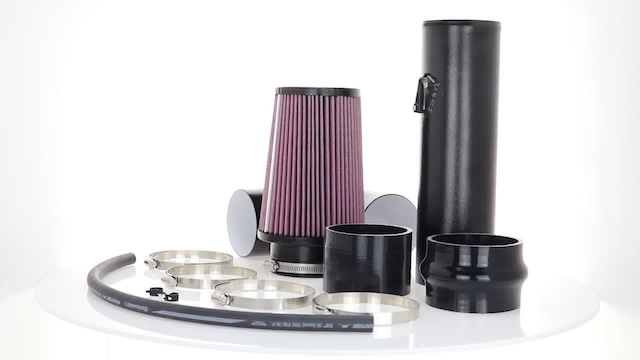
We might be a little biased, but we think these are the qualities of a great cold air intake kit.
1. Metal Construction. Metal has better thermal properties than plastic. It’s also stronger and will last longer than roto-molded plastic, which can shatter or crack over time.
2. Consistent Intake Tube Diameter: Air intake tube diameter is arguably the most important aspect of a performance air intake. If the tube flows a little too much air – or not quite enough – it will not perform correctly at wide open throttle (WOT). Roto-molded plastic air intake kits have a lot of problems with oversize or undersize tubing because of the way they’re made. In fact, almost all roto-molded parts have a section that’s too thin or too thick, throwing off the air flow by a significant amount.
3. Lifetime Warranty. If an air intake is well made, it should last the lifetime of the vehicle or longer. And a good Lifetime Warranty should NOT have exclusions for normal off-road use, track use, or commercial use. A “lifetime” warranty with a bunch of exclusions isn’t.
4. Premium Reusable Air Filter That’s Made In The USA. Several companies offer engine air filters that are re-usable, but it’s important to verify the filter itself is Made in the USA. Imported filters often use inferior quality filter media to keep costs down, but the consequence of a cheap air filter is either poor performance or poor filtration. Poor performance is no fun; poor filtration can cause long-term engine damage. We wouldn’t ever recommend an air intake kit without a US-made air filter.
We’re A Tier 1 Supplier Because We Make A Great Product
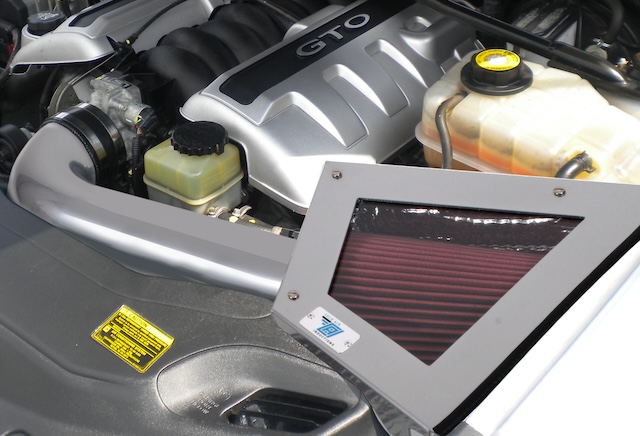
Finishing where we started, the secret to our success as a company has been our dedication to quality and innovation. And the evidence of our dedication is our status as a tier 1 OEM supplier.
Being a tier 1 supplier isn’t easy. A lot of companies can’t or won’t do it because of the strict quality requirements. But every one of our products is designed and manufactured to meet or exceed rigorous specs, and we document every step of the process.
We know we’re biased, but we think we make the best quality cold air intake kits in the industry. Our customers rate our products very highly, and we do business with some of the biggest automakers in the world. Why buy from anyone else?

